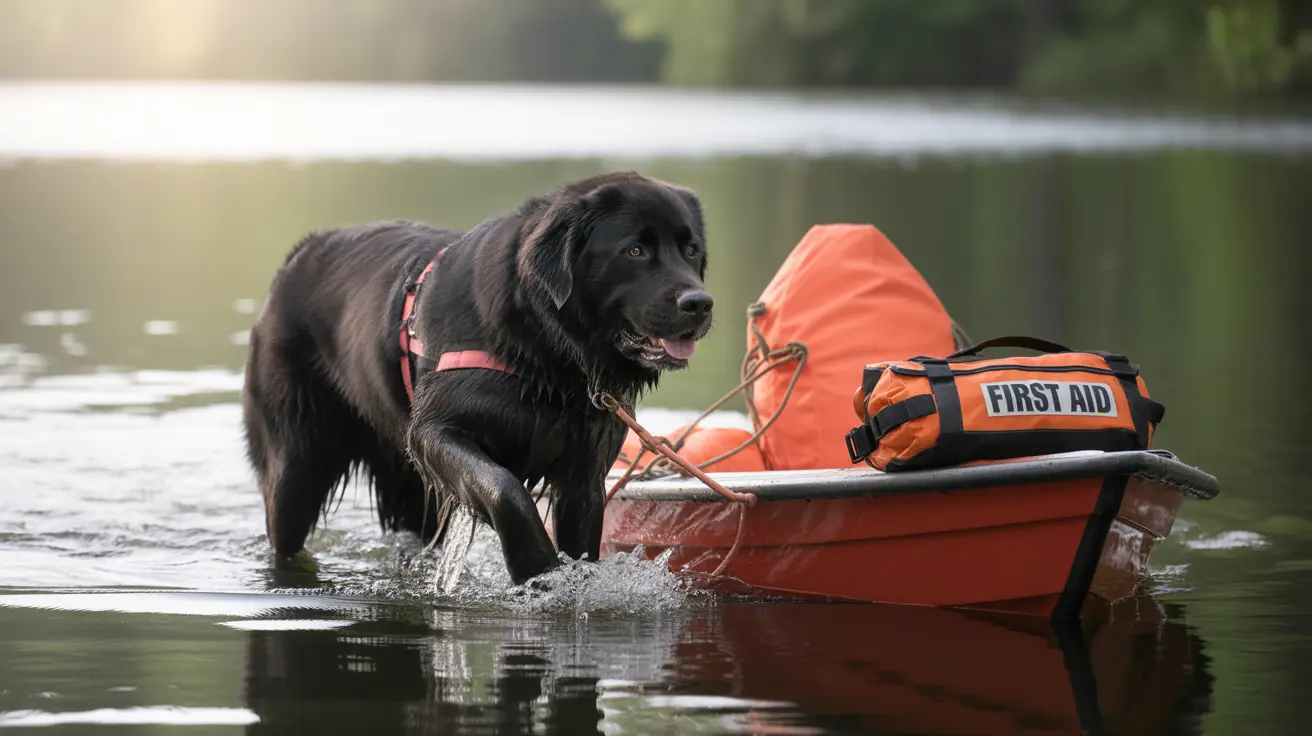Water rescue dogs represent an elite group of canines specially trained to assist in aquatic emergencies. These remarkable animals combine natural swimming abilities with intensive training to become invaluable assets in water-based search and rescue operations. From patrolling beaches to participating in complex helicopter deployments, water rescue dogs save lives in situations where human rescuers might struggle.
Working alongside lifeguards and emergency response teams, these dedicated canines are capable of remarkable feats, including towing boats to safety and retrieving drowning victims from dangerous waters. Their unique capabilities and unwavering dedication make them indispensable members of water rescue teams worldwide.
Breeds Built for Water Rescue
While several dog breeds excel in water rescue work, certain breeds stand out for their natural abilities and physical characteristics. The Newfoundland dog leads the pack, famous for its powerful swimming ability, water-resistant coat, and extraordinary strength. These gentle giants can pull a drowning adult to safety and even tow small boats.
Labrador Retrievers and Golden Retrievers also excel in this field, combining athletic ability with intelligence and trainability. Their water-resistant coats and webbed feet make them naturally suited for aquatic work. Portuguese Water Dogs and Leonbergers round out the list of breeds commonly employed in water rescue operations.
Training Process and Certification
Water rescue dog training begins early, often when puppies are just 10-12 weeks old. The process starts with basic obedience and positive water exposure, gradually progressing to more complex rescue scenarios. Early training focuses on building confidence in and around water through play-based exercises.
Advanced training includes specific rescue techniques such as:
- Jumping from boats and docks
- Towing rescue equipment to victims
- Supporting struggling swimmers
- Responding to emergency commands in challenging conditions
Working in Real-World Conditions
Water rescue dogs operate in diverse aquatic environments, from calm lakes to turbulent ocean waters. They must maintain composure and effectiveness regardless of weather conditions or water conditions. These dogs work closely with their handlers, forming highly coordinated teams capable of rapid response in emergencies.
During actual rescues, these dogs demonstrate remarkable focus and determination. They can swim long distances, fight strong currents, and maintain stability while supporting the weight of an adult human – all critical skills in emergency situations.
Global Impact and Organizations
The Italian School of Canine Water Rescue (SICS) leads the world in developing water rescue dog programs. Their methods have been adopted globally, including by the American Academy of Canine Water Rescue (AACWR). These organizations maintain rigorous standards for certification and regular recertification of both dogs and handlers.
Water rescue dogs have dramatically improved emergency response capabilities in coastal regions worldwide. Their presence has reduced response times and increased successful rescue rates in aquatic emergencies.
Frequently Asked Questions
What breeds make the best water rescue dogs and why are Newfoundlands so popular for this work?
Newfoundlands are considered premier water rescue dogs due to their natural swimming ability, incredible strength, and water-resistant double coat. Their large size, webbed feet, and innate desire to rescue make them ideal for water work. Other excellent breeds include Labrador Retrievers, Golden Retrievers, and Portuguese Water Dogs.
How long does it take to train a dog for water rescue and what does the training involve?
Basic water rescue certification typically takes 12 months, while advanced certification can take up to 24 months. Training involves progressive stages starting with basic obedience, water familiarization, and advancing to complex rescue scenarios, including boat work and victim retrieval.
What specific skills do water rescue dogs learn to save people in aquatic emergencies?
Water rescue dogs learn to tow boats and equipment, retrieve drowning victims, jump from various heights into water, support struggling swimmers, and respond to both verbal and visual commands in challenging conditions. They're also trained to remain calm in chaotic environments.
How do water rescue dogs and handlers work together during real rescue missions?
Handlers and dogs operate as coordinated teams, with handlers directing dogs through specific commands and hand signals. The dog performs the water rescue while the handler manages the overall situation, ensuring safety and coordinating with other emergency responders.
Which organizations certify water rescue dogs and what is involved in maintaining their certifications?
The primary certifying organizations include SICS and AACWR. Certification maintenance requires regular training sessions and recertification every two years. Dogs must demonstrate continued proficiency in all rescue skills and physical fitness requirements.






